- Administrator
- Albums and Singles
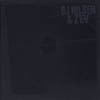 The sparse credits that accompany this disc do not make clear if this is an actual collaboration or a split release, though it is obvious that Swedish electronics wizard Nilsen leads the way on the first piece, while everyone's favorite industrial percussionist is the focus of the second. Regardless, the cryptic liner notes and black-on-black artwork are completely appropriate visual representations of the dark expanse that constitutes this album.
The sparse credits that accompany this disc do not make clear if this is an actual collaboration or a split release, though it is obvious that Swedish electronics wizard Nilsen leads the way on the first piece, while everyone's favorite industrial percussionist is the focus of the second. Regardless, the cryptic liner notes and black-on-black artwork are completely appropriate visual representations of the dark expanse that constitutes this album.
The track credited specifically to Nilsen is a slow, sparse drift of electronics. Although obviously synthetic in creation, it feels like the sound of massive strings the thickness of telephone wires being played, creating thick, bassy waves of sound. What sounds like it could be some of Z'EV's percussion elements are treated down to a gentle vibration, like a loose panel on the side of vibrating machinery. It is a dark affair through and through, with the sweeping low end punctuated with bizarre mechanical hums that pile on a sense of impending doom and destruction.
In some ways, the second track specifically credited to Z'EV is the polar opposite: it is more explosive force and energy next to Nilsen's inertial drift. The track is heavily comprised of the heavily reverberating metallic percussion elements he is known for, with only enough processing to let their impact transfer fully to a recorded medium. Interestingly, there are some passages that take small digital delays of the sound and use them to shape and mould the sound, as opposed to just the actual percussive elements. The overall track becomes as much about the microcosmic sonic debris as it is about the explosive metallic pulse. Compositionally, there is also a great deal of moments in which the sound swells to an explosive, chaotic climax before dissipating to near silence, akin to some of Hermann Nitsch's compositional work for his Orgies Mysteries Theater.
Although only two tracks (both clocking in at, unsurprisingly, 22:22 excluding a few seconds padding for mastering purposes) are listed in the liner notes, a third, also of the same length, is on the disc as well. Although largely silent, there is a small, short reprise in the closing few minutes of restrained metallic thump and clatter that could be some original source material, and outtake, or something else entirely. Regardless, it is there, and makes an interesting footnote.
This is overall a somewhat difficult disc since it does stylistically shift greatly from one half to the other, and therefore takes a listener who is willing to accept both extremes. However, Nilsen's minimal electronics compliment Z'EV's maximal percussion nicely, and the dark, yet beautiful mood is surely consistent between both of the long pieces, and thus make it a more appropriate combination than words or descriptions alone would seem.
samples:
Read More
- Administrator
- Albums and Singles
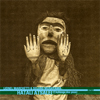 Titled after a Greek ritual that forms a conceptual background for the disc, this duo leads an ethnographic journey that is every bit as disturbing and frightening as expected, given that the title translates to "exchange of eyes." Marchetti's compulsive attention to detail couples with Murayama's creepy vocalisms to make for a compelling, dramatic work.
Titled after a Greek ritual that forms a conceptual background for the disc, this duo leads an ethnographic journey that is every bit as disturbing and frightening as expected, given that the title translates to "exchange of eyes." Marchetti's compulsive attention to detail couples with Murayama's creepy vocalisms to make for a compelling, dramatic work.
Across five tracks, they slowly introduce this hazy world of ritual, where nothing is overtly clear but instead provides only the rudimentary framework to allow the images to be brought up by imagination, and what vivid, disturbing images they become. Most elements of nature are even used in this ritual, with water splashes, crackling fire, and the sounds of stones crashing into each other. Murayama supplements Marchetti's regulated layers of sound with heavy percussion, sometimes sounding like oil drums being instituted in the classic industrial style, other times as dramatic and classical as traditional Noh theater.
I'm hesitant to refer to any of this as "found sounds" or "field recordings," because both imply a sense of chaos and randomness, when the use of them here is so structured and focused. These ambient sounds are treated in this case as another instrument, along with, what I can only assume, is more traditional electronic instrumentation being used to treat the sounds, as well as instruments in their own right, like piercing high end sine waves and swelling, low end bass pulses. The treatment of the natural sounds is used to quite a frightening effect on the second track, however. The sound of what could only be a dog playing with a microphone, sniffing it, snorting, yelping, growling, all things expected of a dog forms a major part of the track. Then, a bit of chaos and audio violence and, through treated effects, the barks become more pained and tortured. While it is obviously from studio processing, it is a disturbing and visceral effect.
Special attention should also be made to Murayama's vocalisms throughout the disc. Rarely processed or treated, he gives some of the most pained, agonizing rasps and growls ever recorded to disk. The only parallel I can draw is akin to Malefic's notorious casket vocals on Sunn O)))'s Black One, but more alien and isolated. Without the need of studio effects, he produces some horribly unnatural sounds, resembling a person trying to communicate as a heavy weight is slowly crushing them to death.
This realm of musique concrete is often painted as a dry, academic field that is more about building an artists vita rather than entertaining, but this is not the approach these two artists take. Although no less complex than such pursuits, it is both highly conceptual and infinitely fascinating: a harrowing, frightening, and compelling audio drama that reveals different facets of this ritual with each listen.
samples:
Read More
- Administrator
- Albums and Singles
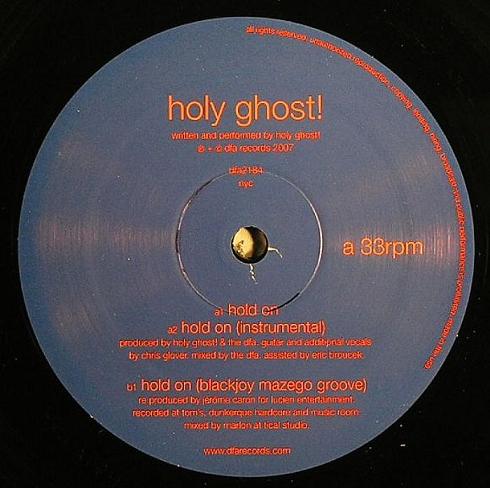 This new semi-regular feature of notable new dance singles is inaugurated with reviews of Holy Ghost!, Syclops, Professor Genius, Kavinsky, Surgeon and Blast Head.
This new semi-regular feature of notable new dance singles is inaugurated with reviews of Holy Ghost!, Syclops, Professor Genius, Kavinsky, Surgeon and Blast Head.Holy Ghost!, "Hold On"
DFA
The two guys in Brooklyn's Holy Ghost! released an album under the name Automato a few years ago, an indie HipHop album with the distinction of being produced by Tim Goldsworthy and James Murphy of the DFA. The album was poorly received by many, including me. On paper, the idea sounded great; in reality, it was boring. The duo went on to be part of The Juan Maclean's live touring band, and something major rubbed off on them. Their first single as Holy Ghost! is a thing of rare beauty: a soulful, sophisticated slice of thumping vocal disco capable of snapping spines and concussing heads. The elements are all familiar: gated synth lead, air-pushing bassline, phased electric piano, snappy hi-hats. What pushes this over the top is the vocals, which add an unbelievable melodic hook, turning this track into something that cannily straddles radio-friendly pop and uptown groove. The lyrics are suggestive but meaningless: "Hold tight, don't make no plans/Don't talk, don't say no words/Be still, don't move like this/Hold on, until it kills." The whole thing is unbelievably cool, and is well-served on DFA's usual slab of plain-sleeved DJ vinyl, which adds an instrumental and a remix by French disco-house producers Blackjoy. Usually I'd be excited about an instrumental version, but the vocals here are half the fun. Blackjoy's remix adds layers of compression, wokka-jawokka bass and funky percussion. They make it sound more professional, but they also kill the wide-open spaces of the original in the process. The A-Side wins, hands-down.
sample:
Syclops, "Where's Jason's K"/"Monkey Puss" 
Another fabulous new single for DFA, who have finally ended a bit of a losing streak after lackluster full-lengths by Prinzhorn Dance School and the Shocking Pinks. Syclops is yet another nom de guerre for Dr. Scratch himself, Maurice Fulton, surely one of the more mysterious members of the techno/house elite. As Syclops, Fulton makes geeked-up robot funk that is minimal in architecture, but maximal in effect. The synthetic kick drum on "Where's Jason's K" threatens to get boring quickly, before it is joined by itchy maracas, cowbell and an indescribably infectious 1/16th note lead melody that keeps changing subtly, but never fails to give up the goods. It's like the best possible cool jazz piano solo ever, but abstracted into plasticated Ketamine land. The B-side is every bit as fucked-up, constructed from chirpy, ultra-compressed 8bit chiptune kinda sounds, layered with a crisp, snappy rhythm section that just doesn't quit, even when it is unceremoniously dropped into the dub chamber. This one is right out of left field, and all the better for it.
sample:
Professor Genius, "La Grotta"
Italians Do It Better 
Self-important music blogs the world over have already done a good job fawning all over the Italians Do It Better label, acting as if IDIB had singlehandedly engineered the Italo-disco comeback. The truth is that Italo-disco never went away, it just stopped being cool for a few years while critics and tastemakers busied themselves jacking off all over minimal house and flabby electro bullshit. For good or bad, it's officially "back" now, and the unprecedented popularity of the IDIB label sampler After Dark certainly proves it. Of all the artists represented on that compilation, far and away the best is Professor Genius, who recently released a stunning full-length CD-R on the hopelessly obscure Tropical Computer System label. This single contains three tracks from the full-length, and got a nice 12" vinyl release on IDIB. Professor Genius works his analog synths with the panache of a seasoned pro, creating sparkling atmospheric disco numbers that stretch out into a rainbow-colored infinity. If Goblin and Giorgio Moroder could have conceived a love child while listening to Kano, it would probably sound nothing like Professor Genius. "La Grotta" has an insistent rhythm section which serves as a foil of the whimsically enfolding synths, which vacillate between nasty and angelic. The infernal "Hot Dice" is darker and druggier, with plenty of ear-massaging bass polyphony, while "Across the Spree" brings things back up to heaven again, the soundtrack to an episode of Miami Vice in which Crockett and Tubbs try to intercept a shipment of black tar heroin into Cloud City.
sample:
Kavinsky, "1986"
Record Makers 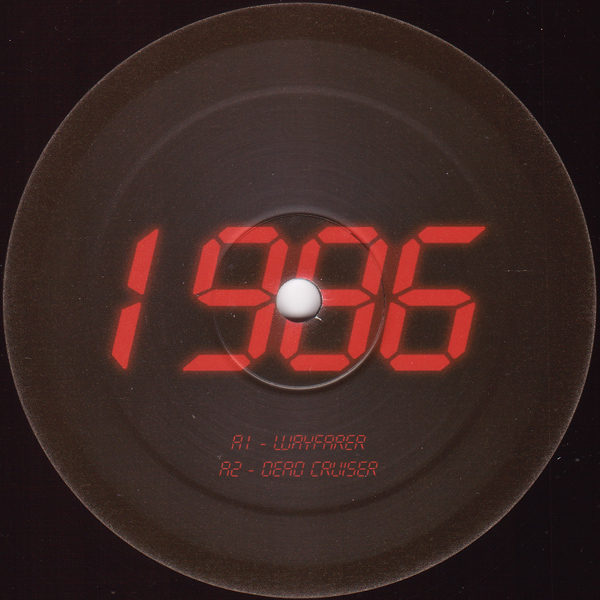
I've been a little bit underwhelmed by the preponderance of hyper-compressed, sample-heavy French disco-house groups lately. As far as I'm concerned, Daft Punk, Justice and the whole Ed Banger crew need to learn some new tricks, because overcompressing samples of old Cerrone tracks is only amusing the first five-hundred times you hear it. Kavinsky is certainly a member of this crew, but he keeps things fresh by injecting a goodly portion of Italo-disco into his headbanging disco-house. Making use of clean synth lines, purposely cheesy string stabs, hyper-tweaked guitar solos, and crunchy kicks that still retain a nice, hard snap to them, Kavinsky creates a thrilling retro-disco concoction that doesn't feel completely claustrophobic and deafening. The tracks on the 1986 EP are frequently blood-pumping, heart-pounding examples of how to do retro right. Things falter a bit with SebatiAn's remix of "Testarossa Overdrive," which succeeds at cramming Kavinsky's sound back into the stifling straightjacket of Ed Banger-style compression-house, and can't sustain its five-minute length. However, the EP ends with the beautiful and triumphant "Grand Canyon," which makes it sound as if nothing has really changed since 1986, except for everything.
sample:
Surgeon, "Whose Bad Hands Are These? Part II"
Dynamic Tension 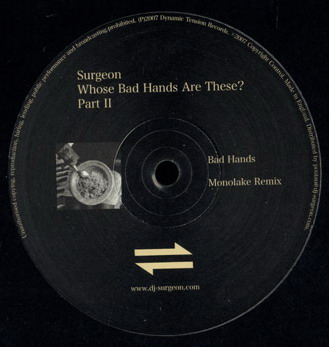
Anthony Child has existed at the very brink of techno for more than a decade now, a reliable purveyor of intense, machinic 4/4 stomp compounded with layers of hellish resonance. The music is hard as nails and dances at the giddy, vertiginous edge of industrial and power noise, but always lands firmly inside the realm of hardcore techno. Child has never been shy about wearing his influences on his sleeve. As an ardent fan of Coil, Whitehouse and other such non-traditional fare (for dance producers, anyway), Surgeon has carved out his own niche in the world of dance: the pleasurable punisher, the enforcer of sado-ecstatic technoise. This new one on Surgeon's own Dynamic Tension label, the second part of a conceptual pair, is just what everyone looks for in a Surgeon record: a devastating mixture of doomsday dirge and apocalyptic rave-up, complex crunchy textures slamming into resonated plonks pulled straight from Satan's asshole. There is a bit of an influence from British dubstep in evidence on this EP, and not just because Vex'd turns in a remix. Something about the way the surface noise and echo are used seems to suggest the work of Burial and Vex'd, without falling into their annoying habit of just giving up on the groove completely.
sample:
Blast Head, "Slide Out"/"Soft Step"
Lastrum 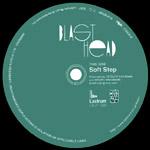
I don't know anything about this Japanese duo, and I don't really care. This tasty slab of hard-to-find DJ vinyl reproduces two tracks from their full-length album Outdoor, and evidences two different approaches meeting and shaking hands on a crowded dancefloor. On "Slide Out," the idea is percolating synthesizers, dub-style circulations of compounding delay, and sunshine-bright sequences of beeps and boops. Blast Head's music displays the Japanese gift (or curse?) for preciousness and cartoonish pastiche, but a complex backbone of jazzy electric organ gives this a sophistication that would make it fit right in with the classiest uptempo lounge music that NYC, Paris or Ibiza could hope to produce. "Soft Step" takes the jazz a step further, a whacked-out samba-house number that pours it on thick, but keeps things bubbly and light as air. The effect is reminiscent to some of Japan's weirder, exotica-tinged entries into hyperspeed jungle (think The Lift Boys or J.O.Y.), but the microscopic precision and care with which this track was obviously constructed make it a pure and guiltless pleasure.
sample:
Read More
- Creaig Dunton
- Albums and Singles
On the surface, Map of the Universe seem perched in an early position for the inevitable 1990s revival that is sure to begin any day now. Across these 10 minutes they certainly do remind me of a great deal of the alt-rock scene once documented well on 120 Minutes. There's a more experimental, dissonant undercurrent to most of these tracks that put them in league with the likes of Spacemen 3 or Loop as opposed to the Breeders or Belly.
There are some obvious nods to the 1970s punk sound as well, both "The Cop" and "Animal Peace" have that early Ramones sing-a-long chorus vibe to them, around rapid fire verses. Luckily they stay much more faithful to the roots of punk than the bands who came along in the '90s doing the same thing that most of us would prefer to forget. The two slower tracks are more apt to demonstrate this noiser side of things though.
"Plastic Form Beauty" moves along at a calmer, more bass driven pace, with a seething bed of noisy guitar that's more Robert Hampson or Sonic Boom than any other forgettable 1990s guitarist. The closer, "Social Royal" is a particular high point for me, as the greater sheen of distortion, coupled with the pacing, apes classic Sonic Youth in a somewhat more accessible way.
It's not an insult to consider Map of the Universe a pop band, because that's what they are. But more in a classic, song oriented sense instead of a commercial entity one. The more dissonant elements are supposed to form the foundation of their next EP, which will probably be even more interesting. It is not going to rock your world, but this little EP will surely give a nice, warm, nostaligic feeling.
Read More
- Matthew Spencer
- Albums and Singles
Morketid is a Nordic idiom used to describe the boreal winter. The region's harsh cold and lack of light were Tedeschi's inspiration, but the result is much tamer than its namesake. The component loops, synths, and field recordings are sparse and simply arranged, but alone those qualities alone don't evoke the polar landscape. The point would have been lost to me if not for the liner notes. Tedeschi genrates some pleasing sounds, but their charm is worn away by pridicible programming and plodding tempos. If anything, Morketid reminded me of an almost interminable direct flight from Portland to Germany a few years back. The plane crossed over Canada, Greenland and Iceland, but a heinous case of jet-lag induced insomnia prevented a full apprciation of the sights. The landscape the glided below me was beautiful, but I was too tired for it to make an impression.
Read More
- Administrator
- Albums and Singles
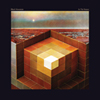 Arrayed in dystopian garb and armed with righteous indignation, Black Mountain's newest record explodes and pounds in unison with the bombs and wars that populate Stephen McBean's lyrics.
Arrayed in dystopian garb and armed with righteous indignation, Black Mountain's newest record explodes and pounds in unison with the bombs and wars that populate Stephen McBean's lyrics.
Jagjaguwar
The world is a bleak place in McBean's eyes. It is full of violence, injustice, doubt, and little else. What hope that does exist lays dormant in a shelter under the constant threat of dehumanazing and near-invisible evils; there's plenty of melodrama on In the Future and much of its bombast serves to positively amplify Black Mountain's unusual approach to rock 'n' roll. "Stormy High" begins with a sudden and heavy jerk. It stomps about wearing tattered guitars and half-moaned vocals with confidence, drawing its sex and grit together closely enough to warrant thoughts of "The Lemon Song" and Robert Plant convulsing on stage in a rage of orgasmic delight. McBean's idea of danger, however, revolves less around his penis and more around enslavement and the kind of demons that haunt lazy or uninspired men. Their debt to blues and '70s rock made apparent, the band proceeds to carve the lazy "Angels" out of sweet pop mechanics and epic synthesizer swells. This is the first sign that Black Mountain is about to attempt something a little bizarre, which is the fusing of psychedelic pop, rock, and metal with the stylings of America's "southern rock" music. It is true other bands have done this, but Black Mountain's particular blend of these elements is especially bold. They sacrifice little of the elements that make each of these genres distinct and instead mash them together with tremendous force, pulling equal amounts of heavy guitar mashing and LSD-inspired madness from their instruments and tongues.
"Tyrants" represents the first all-out mashup on the record. When it begins it sounds like a titanic march across a barren desert, a march so large that war drums are an unnecessary addition to the stomping of the army's feet. With a dusty bass line and resigned drum beat, the song quickly shifts into a lower gear. Enormous spaces open up in the music and a seething synthesizer begins to circle through the song like a vulture. The lyrics and music then work themselves back into a frenzy propelled by an infatigable disdain for the evil men do. A deep serenity pervades much of the song in the form of cascading electronic melodies and a rubbery rhythm, but its all sandwiched between heavy guitar riffs and a solo that calls Satan to mind more than Timothy Leary. In contrast, "Wucan" emphasizes psychedelic rock's influence on the band. After a fuzzy and vaguley funky rhythm section sizzles out, the music is shot through with thick, almost cheesy keyboard atmospherics. They shimmer and wobble in acidic light while the band plugs along beneath their vast reach. I had to make sure Richard Wright wasn't listed anywhere in the liner notes after the song ended.
The bombast doesn't always work in the band's favor, however. There are moments where the music is as awkward as some of McBean's introverted and indecipherable lyrics. "Stay Free" clunks along with a beautiful melody and an ethereal vocal performance, but it sounds flat sandwiched between "Wucan" and "Queens Will Play;" the band's more playful elements are absent and the lyrics are, for lack of a better term, confounding. Perhaps someone with more time than I have can make sense of these lines: "Bodies at sundown / Stiff on their knees / Beautiful ponies / So beautiful / They'll kill us all." Even when the band is firing on all cylinders, their tendency to shoot for the epic causes some amount of stumbling. "Evil Ways" could be a great voodoo jam spiced with American brute force, but ends up sounding awkward due to the rather lackluster employment of an organ and a chorus that feels out of place on this album.
"Bright Lights," the album's 16 minute dénouement, brings every song's best and worst qualities together. The lyrics are less than stellar, but the instrumentation blends the bands gentle and aggressive qualities without flaw. The entire middle portion of the song is an extended psyche-jam with all manner of minutae populating the drone that serves as the song's core. The band's physical and creative energies shine through on this song most clearly. "Bright Lights" also highlights just how fragile some of the band's compositions are; in their quest for fusion they sometimes overlook the fact that some of their songs offer little more than that fusion. Their energy helps to carry them through some rough spots, but without it a few of these performances might've ruined the record.
This quintet's energy is their greatest virtue and when it is paired with solid songwriting Black Mountain sound both unique and as massive as their name implies.
samples:
Read More
- Administrator
- Albums and Singles
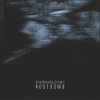 Kevin Doherty of Sleep Research Facility originally released this album in 2001, based on the first eight minutes of the film Alien and named after the freight ship of which Ripley was a crew member. At the end of 2007, it was reissued with new artwork and a bonus track on the original label.
Kevin Doherty of Sleep Research Facility originally released this album in 2001, based on the first eight minutes of the film Alien and named after the freight ship of which Ripley was a crew member. At the end of 2007, it was reissued with new artwork and a bonus track on the original label.
Going to see director Ridley Scott's groundbreaking sci-fi space epic was one of those markers of my teenage years that I will not easily forget; principally so for the fact that the claustrophobic atmosphere and edge-of-the-seat suspense was superbly drawn and masterfully handled but also secondarily because this was the first '18' certificate film I ever saw. The viewing was accompanied by a certain frisson of excitement because I had lied about my age in order to get into the cinema (I was barely 17 at the time). I was also (and still am) a fan of the work of HR Giger, he being one of the profoundest influences on my own artistic output both then and now. Needless to say it made a huge impression on me at the time and it appears that it made an equal impression on Kevin Doherty.
Alien is nearly three decades old now but is still a deeply affecting film, on both a straightforward action level and a deeper psychological one, and has passed into the canon of films that are essential viewing. The scenes on which this album is based are the ones in which the Nostromo (the interstellar ship in which all the action takes place and a reference to Joseph Conrad, the author of Heart of Darkness—a particularly apt metaphor for the ship and what happens on board) is slowly coursing through the deep black void of space. The film above all dwelt on the claustrophobia, tight confines, and isolation of the setting along with the helplessness of the characters confronting the unrelenting, unthinking, and instinctual face of evil—oppressively dark, dank, and dripping corridors, little hiding places where anything could be lurking and the heightened sense of dread and fear palpably stalking the ship. Doherty successfully translates all these qualities of the film into sound: low bass rumbles and gentle susurrations (some just barely discernible and some ebbing and flowing wave-like) get deep and firmly into the psyche and create a sense of unease, creating a feeling that something brooding and malevolent is stalking or lurking just around the corner.
Additionally present is the feeling of intense freezing coldness and vast isolation, of immeasurably incomprehensible distances and voyages lasting years, and that whatever happens you are far from the ken of man and safety; that whatever you face you face alone. Just like in the film, the evil was for the most part not necessarily an overt in-your-face species of evil, but implied; indeed for most of the film its face was not even revealed—nevertheless the tension subtly telegraphed imbued the film with a sense of impending soul-crushing doom. Reflecting that aspect the same is true of all the pieces on here. They are not overtly dread-inducing but the insistent quietness and subtle deep undertones impart a tense anticipation and expectation, a feeling that something unwelcome is just out of sight and hearing but whose presence is nonetheless felt.
Bearing in mind that this was Doherty's debut release, the album is a tour de force of atmosphere and tension building, pitched at just the right level and judicious in its use of sounds. Subtlety is the keyword here and the vein of implied dread running through the music on here is all the stronger for that subtlety.
samples:
Read More
- Administrator
- Albums and Singles
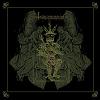 For their fourth release, these black metallers from Israel have produced an album of no worth whatsoever. The music is unimaginative and some of the lyrics are downright ridiculous; two huge problems that are not redeemed by even a shred of any sort of passion. This sounds like music made by people who understand how the genre should sound but do not actually like it.
For their fourth release, these black metallers from Israel have produced an album of no worth whatsoever. The music is unimaginative and some of the lyrics are downright ridiculous; two huge problems that are not redeemed by even a shred of any sort of passion. This sounds like music made by people who understand how the genre should sound but do not actually like it.
The music is technically good black metal, the drumming is relentless and the guitars are a metallic dirge, but there is something lacking. There is no (hell)fire to the performance, it is more like black metal by numbers. This is not helped by Larenuf's vocals which are devoid of any menace or power. He sounds bored, when he roars it is a limp, dead croak which is normally something to be proud of in a band like Tangorodrim but here it just highlights how run of the mill this album is.
It does not help that the lyrics are cheesy and poor even by black metal standards, at least with a powerful performance a substandard lyric can be transmutated into something more. However, there is not much that can be done with the lyrics to the album's title track: "I am standing in a naked forest/And worship the clean ones!/They smell nice, I have to take a shower." Now I don't know if they are taking the piss but even if they are this is a poor attempt at any sort of humour.
By the end of the album (granted it is short), Justus Ex Fide Vivit has proven itself to be generic and bland, not words that would normally be associated with this genre. There are some excellent bands out there that are playing around with the black metal formula to make some riveting music but Tangorodrim is not one of them. I would not mind such an old fashioned approach to this kind of music if it at least had a bit of energy to it but this is a flaccid collection of music if ever I heard one.
samples:
Read More
- Administrator
- Albums and Singles
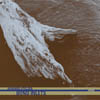 As a way of celebrating a decade of his label Intransitive, as well as the anniversary of his first album, Stone Blind, Boston based tape fetishist Howard Stelzer returns to his roots and dissects that early work to construct something entirely new but remaining true to his love of all things cassette.
As a way of celebrating a decade of his label Intransitive, as well as the anniversary of his first album, Stone Blind, Boston based tape fetishist Howard Stelzer returns to his roots and dissects that early work to construct something entirely new but remaining true to his love of all things cassette.
Few artists would actually be willing to expound their love of this recordable magnetic medium. Everything about the cassette seemed more about convenience than art: fidelity was far from great, conventional packaging limited the visual impact of the medium, and brand to brand of blank tape could vary greatly in quality and reliability. Stelzer is one artist who takes these technical limitations of the format and uses them as a sonic palette to paint soundscapes that can be somber, soft and reflective, or terrifyingly oppressive torrents of violence.
Separated into two long tracks, much like the alternating sides of a C60 cassette, both pieces open with a slow build from tape hiss. The first track is all hiss and vibration from the tape heads moving, a subtle cluster of sounds that somehow begin to form a musical interlude, or perhaps it is just an artifact of my mind creating something from the chaos until everything is blown apart by a whiteout layer of pure, crunchy noise. The noise builds in both depth and sharpness as field recording elements and a deep hum rears its head and tries to add melody to the proceedings, but can't quite get its act straight. Even those cheap condenser mics built into so many cassette recordings are used to full effect, in this case for low end explosions to supplement the audio of mechanical failures. Then, after the barrage of controlled blasts and demolitions, a more expansive field of ambience begins to unfold, bleeps and tones that begin to roll upon themselves into noisier territory once again. Somehow this mass becomes musical by the end and sounds like a voracious cassette player devouring an entire music catalog.
The tape hiss from hell that opens the second part acts as the yin to the buried, filtered rumble of rotating tape heads yang, creating a deep sinister rumbling from caverns of analog technology long forgotten. Field recording elements are a bit more pronounced on this second track: random found sounds, someone whistling, etc. The harsh elements are just as harsh, and at times the tape elements are so processed that they resemble black metal guitar riffs, which makes perverse sense given that scene's love of "kvlt" lo-fi production. The disc comes to a close the only way it conceivably could: with a slow trail off to tape hiss and the sound of tape deck being turned off.
Stelzer's return to the material that formed his first release is a fascinating document that is so narrowly focused on one specific theme, and yet sounds neither monotone nor forced. In some ways I was reminded of Akifumi Nakajima/Aube's more subtle noise compositions, but with a more diverse amount of sounds making up the proceedings than his work. Bond Inlets is a fascinating disc that has both strong compositional elements as well as a lot of chance, chaotic noise explosions that work extremely well together.
samples:
Read More
- Administrator
- Albums and Singles
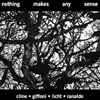 This single track, 18+ minute improvisation by a veritable super-group of six string abuse and experimentation (including members of Wilco and Sonic Youth), aided and abetted by the No Fun Fest curator and analog electronics wizard, actually has a misleading title. While these guitarists could be expected to create a squall of guitar noise like a bag of wet cats rolling down a hill, it instead shows an admirable level of free jazz type restraint and balance.
This single track, 18+ minute improvisation by a veritable super-group of six string abuse and experimentation (including members of Wilco and Sonic Youth), aided and abetted by the No Fun Fest curator and analog electronics wizard, actually has a misleading title. While these guitarists could be expected to create a squall of guitar noise like a bag of wet cats rolling down a hill, it instead shows an admirable level of free jazz type restraint and balance.
While it is balanced and restrained, it is never dull or too subtle. Instead, it has a massive sense of space in which the three guitarists are allowed to experiment and improvise; occasionally with massive amounts of effects, other times stripped down to the purest of guitar tones. Monotract member/solo artist Carlos Giffoni's electronic noise never overwhelms or dominates the space, but instead functions as yet another instrument that provides a good contrast to the generally more lower-end focused guitars.
Unlike would be the case with a similar conglomeration of pretentious 1970s rock guitarists, I for one have no way of clearly identifying the work of any specific artist over another, which makes the improvisation more of a cohesive entity instead of an exercise of whammy bar masturbation. The more quiet, reflective passages of lesser treated guitar work might be more consistent with some of Nels Cline's work with Wilco, while there is more than enough screech and feedback to show Lee Ranaldo's Sonic Youth background. And, I'm not going to lie; I'm not familiar with Alan Licht's stuff, so I won't pretend to be.
Over the duration of the long track, the sounds waivers from warm noise sheets to quieter, guitar driven passages. As aforementioned, there are never extensive harsh noise passages, but there are times in which haunted house style tones mix with carefully controlled feedback and deep, explosive pulses of electronic noise. When the noise is more prominent, it has a greater sense of tactile texture and thickness. It is plenty harsh and distorted, but in a complex, fascinating way. Giffoni even manages to work out a few solos on his electronic gear, sometimes resembling a trumpet, other times a snake charmer's flute.
Free jazz is the greatest parallel I can think of to describe this release, because these artists show that same level of restraint and working of each other's playing as would be expected from the likes of Sun Ra or Ornette Coleman's genre defining album. The liner notes, originally written for Lou Reed's Rock 'n Roll Animal are appropriate for the force presented here but sell short the subtly and complexity of sound that is also present.
samples:
Read More
- Administrator
- Albums and Singles
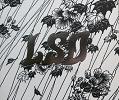 Recorded live in the studio over two nights, this is a double CD of jams by the ever wonderful Bardo Pond and Japan's equally loveable LSD March. The music tilts from sounding like outtakes from Bardo Pond's Selections CD-Rs to LSD March's heady live sound. All the descriptions and superlatives that have been attributed to either band apply just as well to this monster of an album that they have spawned.
Recorded live in the studio over two nights, this is a double CD of jams by the ever wonderful Bardo Pond and Japan's equally loveable LSD March. The music tilts from sounding like outtakes from Bardo Pond's Selections CD-Rs to LSD March's heady live sound. All the descriptions and superlatives that have been attributed to either band apply just as well to this monster of an album that they have spawned.
The opening track of the first disc, "We are LSD Pond," fades in like the jamming has been going on for some time before we have been allowed to listen in. Based around a solid groove, the piece is like one long solo where everyone solos. It sounds self- indulgent (and sitting in a studio jamming all day is a fine way to indulge yourself) but it is fantastic nonetheless. There is only one way to describe the music and that is that it is white hot.
Amazingly, from such a high octane start the jams get wilder and better as the album progresses. Most of the pieces work so well thanks to the fantastic drumming on every track. Despite there being three people credited with drums and percussion, it never sounds over the top. On "Utuwa No Naka No Mizu," a Kraut inspired drum pattern allows for the rest of the band to go hog wild with some very exciting guitar with wah pedal solos going on.
On the second disc, the line up has been augmented slightly as it is from a second day of recording. The songs with this line up are substantially longer and unlike the instrumental first act, Isobel Sollenberger contributes vocals to the mix. It begins with a radically different "We are LSD Pond." Sollenberger's voice gets masked by the music, it sounds like she has a PA set up at monumental volumes in another building and it is bleeding through the walls over the maelstrom of LSD Pond's freakout. It works well with this and the subsequent tracks but it would have been nice to have some cleaner vocals too.
I cannot finish this review without mentioning the gorgeous presentation of this album. Archive always have attractive packaging for their releases and this is no exception. Designed by Keith Utech, this release has a textured outer sleeve with a design like old fashioned wallpaper contains a small booklet of photos from the sessions and the CDs (encased in simple black sleeves bound with more of the wallpaper-style card). The physical package matches the sounds heard on the disc perfectly.
Overall this is a phenomenal album, both bands have come together to form a glorious whole and a glorious din. This is a stand out album no matter which band's back catalogue you consider. It is one of the first new releases of 2008 and I would be very surprised if I was not still spinning it in December.
samples:
Read More

